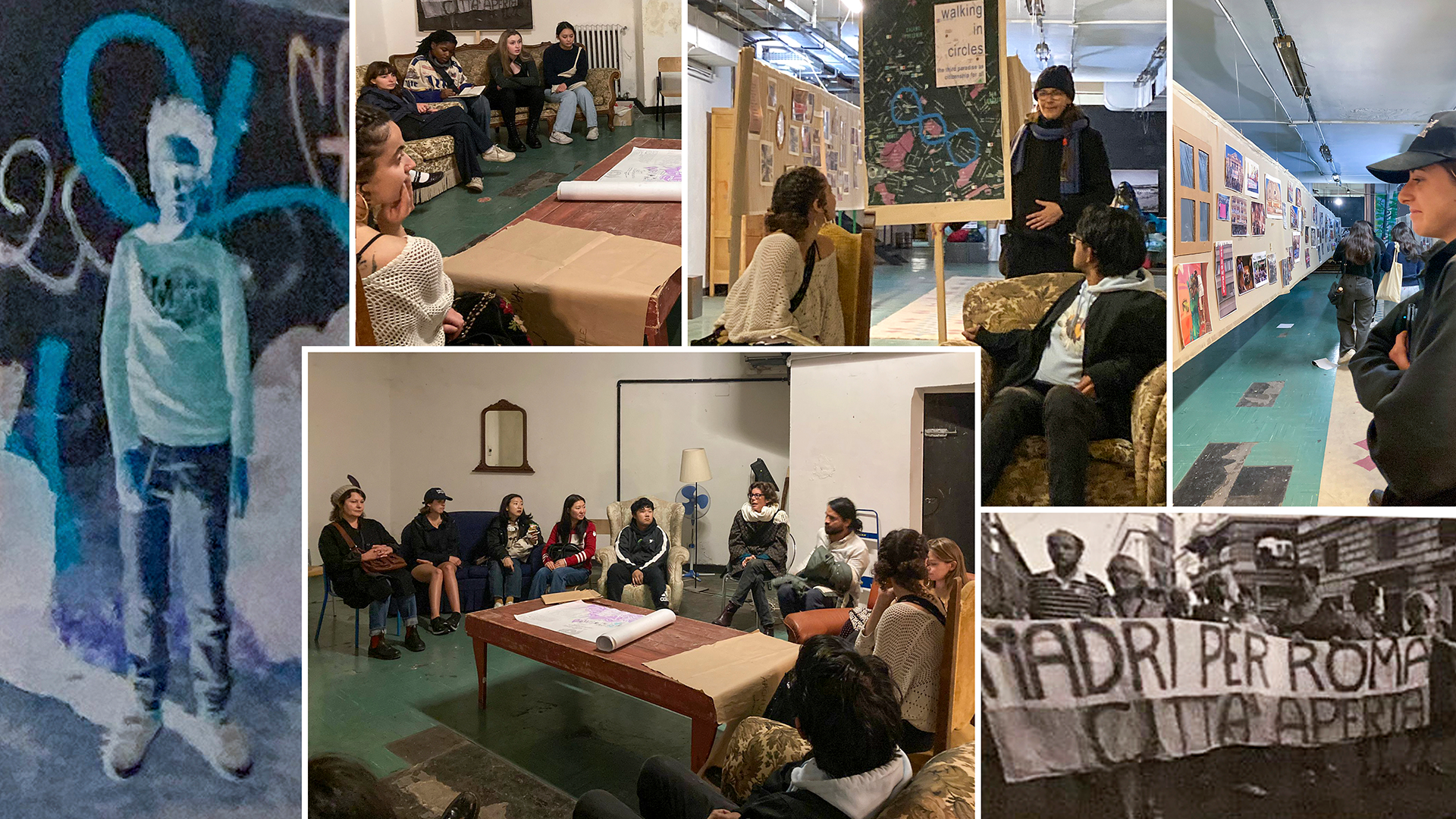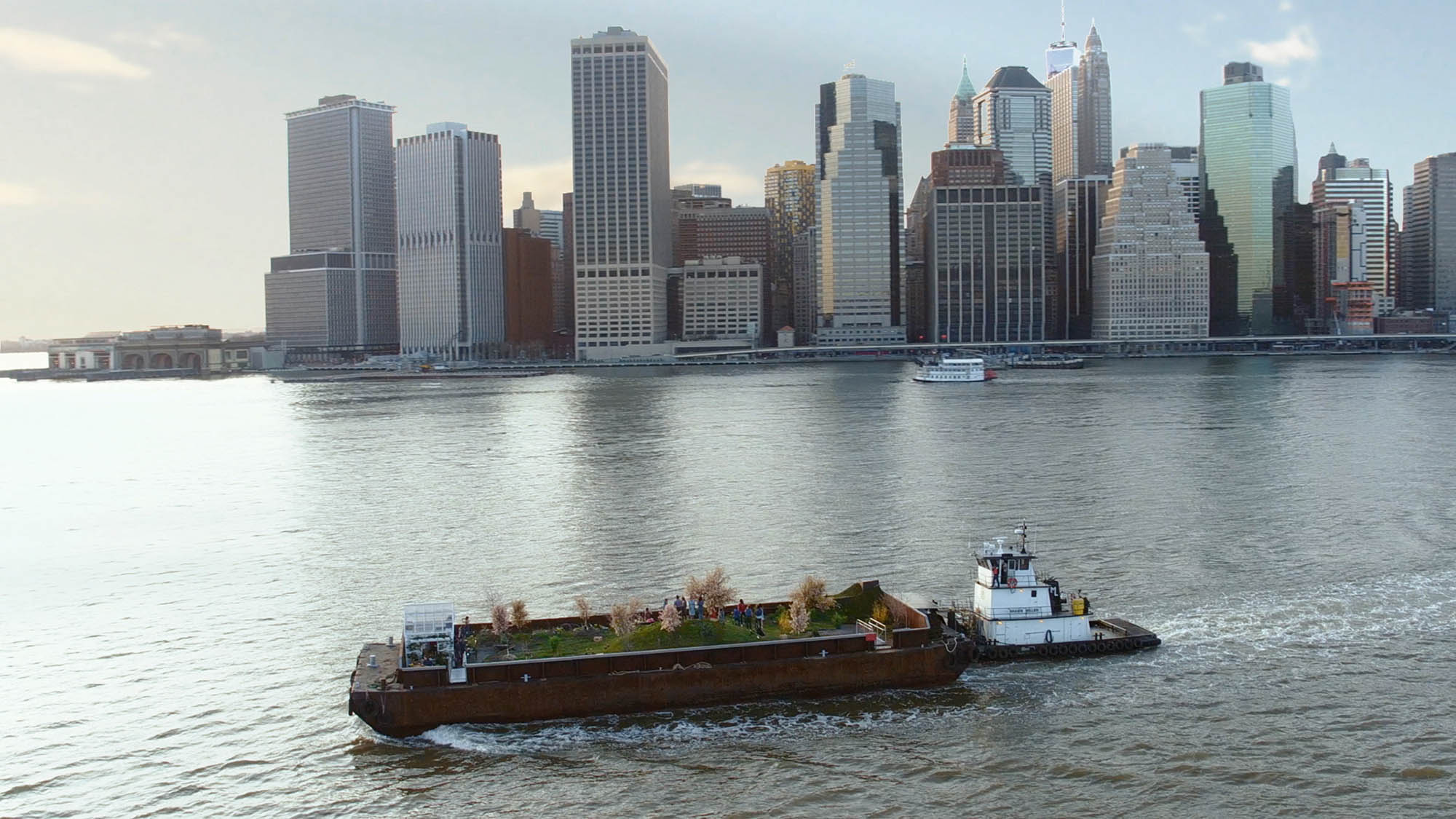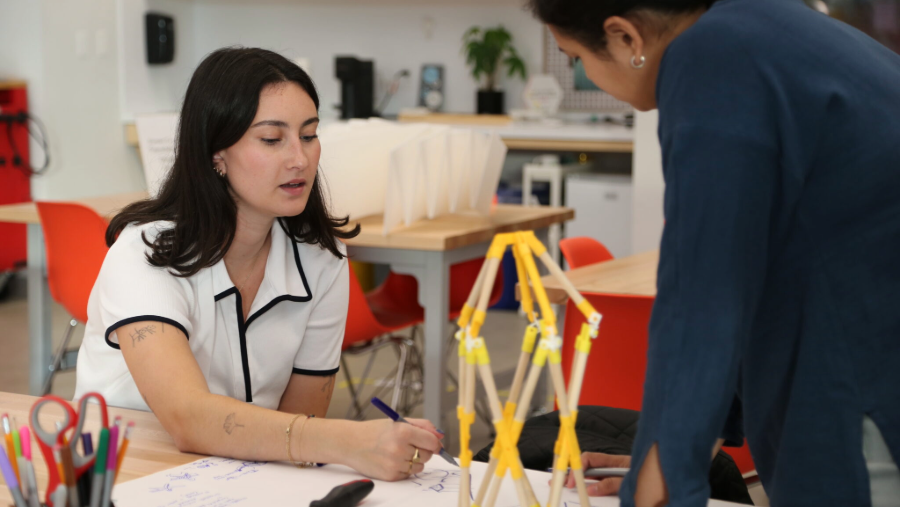Rome is often synonymous with the century-spanning cultural history showcased throughout its urban core. To more fully understand the city, however, it is necessary to move well beyond the tourist gloss. Students enrolled in Visiting Lecturer Carolina Ciampaglia’s Italian Cinema course and Visiting Critic Anna Gorchakovskaya’s Contemporary Rome Seminar embarked on this journey together, delving into life at the margins of Rome, both geographically and symbolically.
This marked the second time Ciampaglia and Gorchakovskaya collaborated to create cross-over activities between their classes in order to expand on the topics at hand. To deepen their understanding of politically and socially engaged contemporary art and culture in Rome, the students ventured out with Gorchakovskaya to where artists can best afford to live and work. All of the most interesting experimental projects are somehow connected with the periphery of the city, Gorchakovskaya finds. “We talk a lot about how the margin can be a truly revolutionary space,” she explains. “It’s also a space of possibility and a radical resistance. And then when we look at the history of cinema, we realize that it’s not a new idea.”
Ciampaglia curates the films she presents each semester based on the locations the students will experience first-hand, offering alternative points of view. This semester’s films include titles such as Ladri di Biciclette / Bicycle Thieves (Vittorio DeSica, 1948), La Dolce Vita (Federico Fellini, 1959), Accattone (Pier Paolo Pasolini, 1960), Non essere cattivo / Don’t be bad (Claudio Caligari, 2015), and La terra dell’abbastanza / Boys Cry (Fabio e Damiano D’Innocenzo, 2018).
We talk a lot about how the margin can be a truly revolutionary space. It’s also a space of possibility and a radical resistance.
Anna Gorchakovskaya
“The Rome that we have been studying through the movies is a Rome that has been under the eyes of the filmmakers since the 1960s,” Ciampaglia says, noting the dramatic transformation that occurred during the post-war reconstruction and economic boom. “Pasolini was the first to point out how the identity of Italians was changing because of the transformation of Italy from a rural, agricultural country into an industrialized, consumeristic one. Rome became symbolic or in any case useful to represent this transformation and to show how those who were suffering were poor, marginalized people, and it was among them that often the eye of the camera of these filmmakers focused.”
To dig deeper into these concepts, Gorchakovskaya and Ciampaglia’s classes co-met for two special events. The first was organized by Stalker, a group of artists, architects, and activists who engage with the practice of walking, encourage engagement with different urban contexts, and help care for marginalized communities through art, design, and shared activities. The second event was a lecture delivered by Italian screenwriter and director Fede Gianni, who discussed his own work exploring lives lived at the margins as well as other contemporary filmmakers who belong to the “cinema of the periphery.”
Gorchakovskaya says the underlying idea is that “in Rome, we have so many things that are hyper-visible, but behind that, there are different, hidden narratives.” Due to the haphazard ways in which Rome developed in the latter half of the 20th century, suburbs grew, communities were forcibly displaced, and neglected and abandoned spaces appeared. Stalker showed students how their work offers an alternative view of the city and the value there is in collaborating with different, often migrant, communities. Together, they visited MAd’O (Museum of the Act of Hospitality), one of many cultural projects located inside Spin Time Labs, a ten-year-old squat in the very center of Rome that houses some 450 people. From there, they walked to the neighborhood of San Lorenzo to visit Stalker’s studio No Working.
The visit allowed me to zoom out and realize that the perception I had of what a living space could be and look like had been very limited.
Alex Park (B.F.A. ’25)
Collectively, these experiences led the students to consider Rome from compelling new angles. “Often we look at cities and only think of the physical history before us, and Rome especially is a ‘museum’ of such monuments,” says Julie Christine Chung (B.F.A. ’25). “Understanding the social conflicts and needs of the people who have inhabited Rome helps in understanding why Rome is the way it is today.” The visit to Spin Time Lab made a particularly strong impression in this regard. Alex Park (B.F.A. ’25) recalled, “Learning about the communal aspect of Spin Time Lab’s living space was particularly interesting to me. The idea of having various booths and workshops, in addition to being encouraged to participate in social activism that directly impacted their own lives, seemed incredibly fulfilling. Although the site was functionally a home for those seeking refuge and housing, it also acted as a space for families to interact, friendships to form, and community to build. I guess the visit allowed me to zoom out and realize that the perception I had of what a living space could be and look like had been very limited.”
As the semester comes to a close, these are exactly the types of takeaways that Ciampaglia and Gorchakovskaya were hoping to offer their students. “Rome is known all over the world for certain fixed images,” Ciampaglia notes. “We don’t want them to perceive their experience in Rome as limited to what happens within the walls and in the historical center. We want them to look beyond those limits.”




